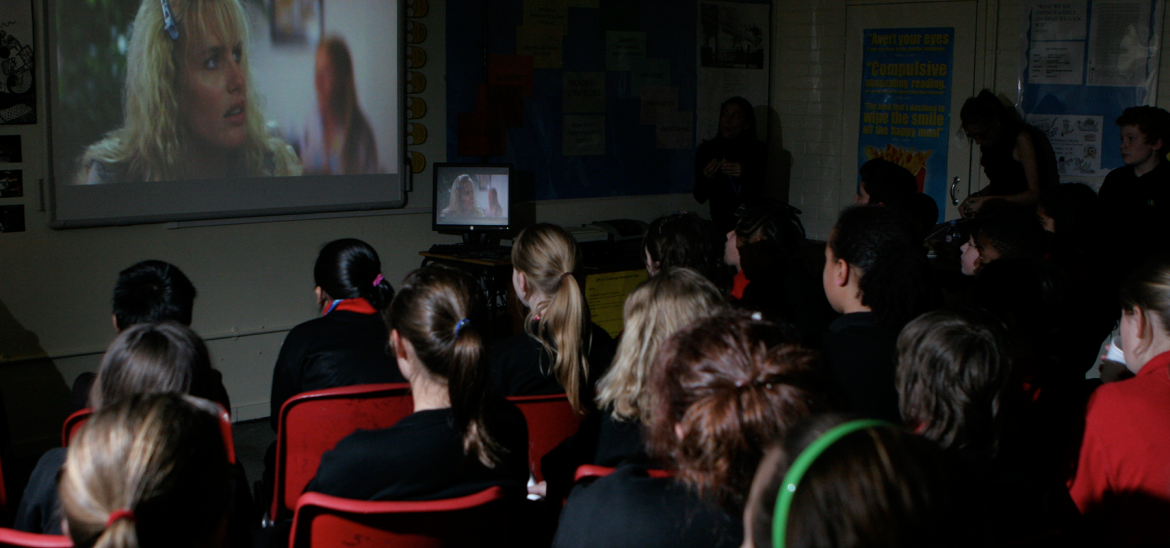Into Film Clubs
Find out everything you need to know about starting an Into Film Club.



Thinking of approaches to revision can be tricky once you've exhausted the mind maps, flash cards, posters, quizzes and so on. Why not use film to breathe a bit of fresh air into your revision sessions?
Here are some top tips on using film to aid revision:
Show an English language film clip and ask classes to write their own subtitles in the relevant language.
When interpreting data is an exam requirement, try exploring the week's Box Office statistics.
Use cinema timings and film run-times to produce mental arithmetic questions.
Use film reviews to revise adapting language style and purpose.
Use historical film stills like a source or to review knowledge about a particular time period. Across the curriculum, invite students to record what they've learned and play it back later.
Why not use recent film marketing to explore ideas around marketing and audiences?
Using film adaptations of classic literature is where I've used film the most. Let's look at a few examples in a bit more depth:
The American text Of Mice and Men, by John Steinbeck, is still on some GCSE English Literature specifications. In the 1992 film adaptation, director Gary Sinise uses the language of film and mise-en-scène to communicate ideas about themes, character and plot in much the same way as Steinbeck uses the written word. (Mise-en-scène refers to everything that appears in front of the camera and their arrangement, including props, characters, lighting, costume and setting).
Read the extract from the novel in which the boss' son Curley is attacking the vulnerable Lennie, and the seemingly defenceless Lennie is looking to his closest friend (George) for help. Then watch the film clip of the same scene. Return to the extract and highlight positive words in one colour, negative words in another. Then ask students to storyboard the scene with the addition of key quotations at the bottom of each frame. For more of a challenge ask students to explain their decisions and link them to themes.
As an additional activity, print out stills from the film and ask students to match them into pairs, linking their choices to characters, themes or events.
Another set text is A Taste of Honey. This is great for Literature and also good for History. The film adaptation of Shelagh Delaney's play could be used in a similar way to Of Mice and Men, using stills from the film to revise themes such as inequality, discrimination, class and life in Manchester in the 1950s/early ‘60s.
William Golding's Lord of the Flies was first adapted to film by Peter Brook in 1963. Brook's use of space and mise-en-scène is wonderfully precise, so using this film as a way into revising key quotations and themes in the novel - such as power, elitism, class, nature vs nurture, religion and the innate evil within man - is easy. The opening montage juxtaposes a quaint, civilised Britain with images of war. [Note: Into Film do not have the rights to provide this particular version of Lord of the Flies, but you can order the 1989 version of Lord of the Flies from us here.] In revision classes, you could use this montage to prompt a quotation-finding activity by printing or displaying stills from the montage, and challenging students to find as many key quotations to match to the image - and then reversing the process. Imposing a time constraint makes it more challenging.
Hopefully this has given you a few ideas for using film for revision and in your everyday classes, and you'll find doing so as rewarding as I do!
We cannot guarantee that all films discussed in this article are covered by the PVSL and are part of our catalogue, but where possible we aim to ensure that this is the case.
Viewing 4 of 4 related items.

Find out more about our streaming service, designed specifically for UK schools.